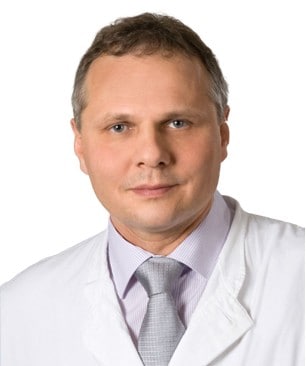Introduction. Diagnosis and Treatment of Panic Attacks in Dubai

A panic attack describes a state of intense fear emerging suddenly, often without warning, and for no apparent reason.
During a panic attack the person develops irrational thoughts, such as: “I‘m dying”,” I‘m about to faint or lose control”, “I must escape from here”.
Especially with the first appearance of panic attack the person is not able to recognize the condition.
Panic attacks are associated with physical symptoms such as chest pain and heart palpitation perfectly mimic myocardial infarction. Therefore, first-time sufferers, may call for emergency services followed by series of diagnostic measures, especially those excluding a heart attack.
Despite the severity and the similarity of symptoms to myocardial infarction panic attacks are purely psychological condition with no underlying physical problems. Thus, the proper diagnosis of panic attacks reduces patient’s unnecessary suffering and useless diagnostic measures. The initiation of psychiatric and psychological treatment relieves the suffering and protects the patient from symptoms aggravation.
Diagnostic differences to other forms of anxiety
Panic attacks are different from other forms of anxiety. They appear “out of the blue”, without any identifiably triggering factors. The phases between panic attacks are usually symptom free, however sometimes the condition can be co-morbid with generalized anxiety. In such cases the affected person feels anxious also between the attacks.
Panic Attacks versus Panic Disorder
The recurring panic attacks are called panic disorder. There are different neurobiological factors increasing the vulnerability for the occurrence of a panic disorder. During anxiety attack, psychological and biological mechanisms intersect and mutually reinforce each other leading to a chronic condition, the panic disorder.
Symptoms of a panic attack
The leading symptom of a panic attack is severe anxiety with the feeling of losing control. The anxiety in panic attacks has its own specific characteristics, such as the fact of occurring suddenly, a tendency to repetition and a lack of recognition of events leading to it.
Panic attacks come along with physical symptoms such as chest pain, heart racing, palpitation and shortness of breath. Other physical signs of panic attacks are sweating, numbness, dizziness, blurred vision, sometimes loss of bodily control ending in fainting. Some people also suffer from tunnel vision. A psychological reaction frequently appearing in the course of a panic attack is depersonalization and derealization. Both are subjective experiences related to patients’ perception toward himself (depersonalisation) and toward the surrounding world (derealization). In depersonalisation patient feels detached from oneself. In derealization he feels that the world has become strange, and unreal.
A panic attack usually lasts 5-10 minutes. In rare cases it can reach a duration of a few hours.
Diagnosis of Panic Attacks
The current diagnostic manuals, DSM V, and ICD 10, describe and quantify the symptoms. The phenomenological (descriptive) approach makes sense as the root causes in the most of psychiatric disorders are unknown.
At the first glance the cause of panic disorder is not explicable, yet it could be identified in the course of psychodynamic psychotherapy.
The diagnostic manuals based on symptoms description are useful as a quick method creating a communication platform for psychiatrists.
The diagnostic manual (DSM V) of the American Psychiatric Association (APA) defines the panic disorder, and its diagnostic criteria.
Diagnostic Criteria
To sum up, a panic attack is an abrupt surge of intense fear or intense discomfort that reaches a peak within minutes and during which time four (or more) of the following symptoms occur:
- Palpitations, pounding heart, or accelerated heart rate
- Sweating
- Trembling or shaking
- Sensations of shortness of breath or smothering
- Feelings of choking
- Chest pain or discomfort
- Nausea or abdominal distress
- Feeling dizzy, unsteady, light-headed, or faint
- Chills or heat sensations
- Paraesthesia (numbness or tingling sensations)
- Derealization (feelings of unreality) or depersonalization (feeling detached from oneself)
- Fear of losing control or “going crazy”
- Fear of dying
Mechanism of a Panic Attacks
Physical symptoms of panic attacks occur because of an inappropriate, “overdrive” of the autonomous nervous system. During the attack the person tends to over-breathe (hyperventilate) which causes excessively exhaling of carbon dioxide. In consequence this lowers the blood acidity (low blood pH), known as respiratory alkalosis. The next sequence in the chain reaction is the removal of the calcium ions from the blood stream. This again leads to temporary low blood calcium level, called hypocalcaemia. The effect of hypocalcaemia is elevated muscle tone up to cramps and dizziness.
Panic attacks, course of the disorder and its effect
Panic disorder is a condition where the patient experiences recurring panic attacks. In panic disorder the person will experience ongoing worries of getting further attacks (anticipatory anxiety).
Anticipatory anxiety is the effect of conditioning. After the first occurrence, the panic attack will inevitably tend to manifest itself again. The result is a vicious circle where the attacks tend to reoccur and increase in intensity.
In panic disorder patients feel dominated by an escalating sequence of events which follow an unstoppable progressive course. The anxiety in panic attack feels real. Fully established panic disorder progressively affects more areas of a person’s life and may end in full invalidism.
On the diagnostic level panic attacks should be differentiated from phobias, in which the anxiety is triggered by certain situations. For example, such conditions as agoraphobia, or claustrophobia (anxiety appearing by exposure to wide or small spaces), phobias related to other circumstances, for example flying phobia, unleashes the same symptoms and dynamics of anxiety as those in a panic attack.
Treatment of Panic Attacks
The most effective treatment for recurring panic attacks is the combination of medication and psychotherapy.
The well-established psychotherapeutic method is Cognitive Behavioral Therapy (CBT). It involves analyzing the process of anxiety attacks, the triggers, the warning signs and identifying ways of assessing and controlling the anxiety. Individuals are also supported in confronting their fears and reducing avoidance behaviours.
The medication used for panic attack treatment are antidepressants belonging to two groups: selective serotonin reuptake inhibitors (SSRI’s) or selective serotonin norepinephrine reuptake inhibitors (SNRI’s). However, the antidepressants unfold their full efficacy after several weeks. In the meantime, panic attacks can be controlled by using benzodiazepines.
Diagnosis and Treatment of Panic Attacks. Summary
- The abrupt surge of a panic attack can occur from a calm state or an anxious state.
- Panic attacks cause various psychological and physical symptoms summarized in the DSM 5 criteria.
- Culture-specific symptoms (e.g., tinnitus, neck soreness, ache, uncontrollable screaming or crying) may be seen. Such symptoms should not count as one of the four required symptoms.
- Panic attacks can occur in the context of any anxiety disorder as well as other mental disorders (e.g., depression, posttraumatic stress disorder (PTSD), dependencies) and some medical conditions (e.g., cardiac, respiratory, vestibular, gastrointestinal).
- The root-causes of panic disorder are multifactorial.
- A panic attacks are often misdiagnosed as heart problems; therefore, the patients are often admitted to emergency with the suspicion of a myocardial infarction.
- The prerequisite of a successful treatment for panic attacks is a proper diagnosis by an experienced psychiatrist.
- Panic attacks are a well treatable condition. The most effective treatment method for panic disorder is the combination of medication and psychotherapy.

DR. GREGOR KOWAL
Senior Consultant in Psychiatry,
Psychotherapy And Family Medicine
(German Board)
Call +971 4 457 4240
